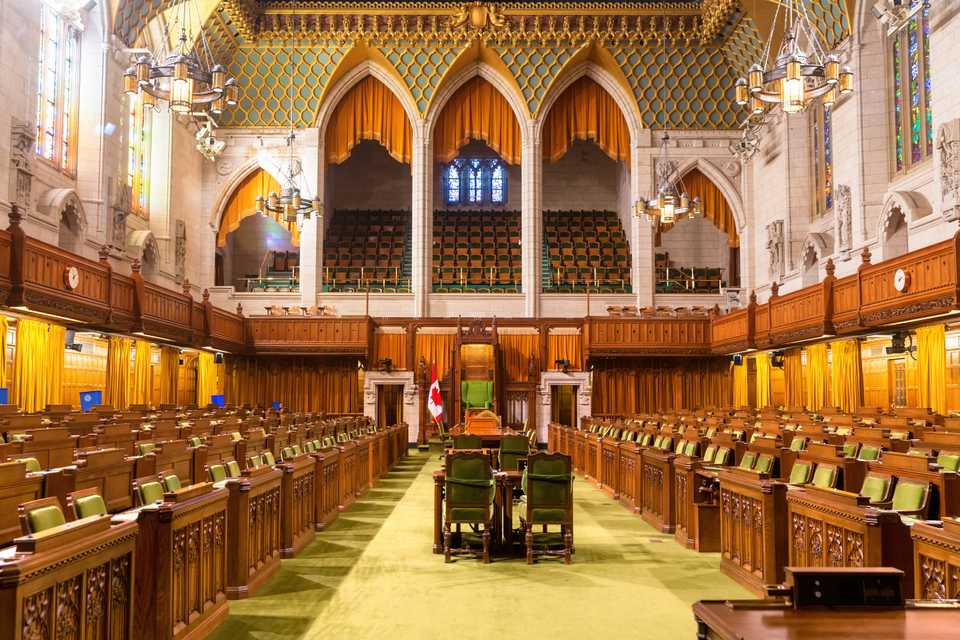The Canadian Constitution, often called the "supreme law of Canada", is a fundamental document that establishes the principles and governmental institutions of Canada. This instrument defines the rights and responsibilities of the federal and provincial governments, as well as the rights and freedoms of Canadians.

In this article, JuriGo explains everything you need to know about the Canadian Constitution: starting with its adoption, the division of powers between the federal government and the provincial governments, and finally the Canadian Charter of Rights and Freedoms of 1982.
The adoption of the Canadian Constitution and its historical context
Before addressing the Constitution of Canada, it is important to better understand its historical context. In the 19th century, Canada was composed of different British colonies, including Upper Canada (Ontario), Lower Canada (Quebec), the Maritime provinces, and other regions. These colonies each had their own government and their own laws, but there was no unified constitution for the entire territory.

To resolve this situation and unify the colonies to create the Dominion of Canada, conferences were organized in Charlottetown and Quebec in 1864. These conferences led to the creation of a constitutional bill, which is known today as the Constitution Act of 1867.
The Constitution Act of 1867 and the division of powers
The Constitution Act of 1867, formerly called the British North America Act, is the principal document of the Canadian Constitution. It was adopted by the British Parliament and came into effect on July 1, 1867. This law established the Dominion of Canada by unifying the different colonies.
The sharing of powers: a basic principle of constitutional law
The Constitutional Act of 1867 is one of the most important legislative texts in Canadian law, notably because it establishes the division of legislative powers between the federal government and the provincial governments.
The federal powers are listed in Article 91, while the provincial powers are listed in Article 92. Here is a table illustrating the main powers attributed to each government:
| Federal Competencies (Article 91) | Provincial Competencies (Article 92) | Shared Competencies |
|---|---|---|
| Indigenous Affairs | Civil Law (ex. Contract Law, Family Law, etc.) | Agriculture |
| Internal and International Trade | Education | Economic Development |
| National Defense and Armed Forces | Municipalities | Immigration |
| Criminal Law and Criminal Procedure | Health | Taxes |
| Customs Duties | Social Services | Fisheries |
| Currency and Banks | Public Lands and Forests | Prisons and Justice |
| Navigation and Maritime Transport | Natural Resources and their Exploitation | Transport |
| Post Offices | Public Works | |
| Power of Disapproval | ||
| Residual Powers | ||
| Taxes |
The power of disallowance in Canadian constitutional law
The Constitution Act of 1867 also provides for a power of disallowance exercised by the federal government over the actions of provincial governments. Indeed, according to Article 56, the Governor General, acting on behalf of the federal government, can annul a provincial law within two years of its adoption if it is deemed contrary to the general interests of the country.
However, this power is rarely used and is considered an exceptional measure. Even though this power is still inscribed in the Constitution, it is no longer used. In fact, the last disallowance of a Quebec law took place in 1910.
The Canadian Charter of Rights and Freedoms of 1982 and the protection of fundamental rights and freedoms
The Canadian Charter of Rights and Freedoms, also known as the Constitution Act of 1982, is an integral part of the Canadian Constitution. Indeed, the Charter guarantees the fundamental rights and freedoms of Canadians. These rights and freedoms include:
- Freedom of speech;
- Freedom of religion;
- The right to life;
- The right to security;
- The right to a fair trial;
- And many more.
The adoption of the Canadian Charter
The Canadian Charter of Rights and Freedoms was adopted in 1982 by the Parliament of Canada, under the direction of Prime Minister Pierre Elliott Trudeau. It came into effect on April 17, 1982, marking a significant milestone in the evolution of the Canadian Constitution.
Protection of rights and freedoms
The Charter guarantees the protection of the rights and freedoms of Canadian citizens and any person in Canada. It applies to all levels of government, including the federal government, provincial governments, and municipal governments.
The first article of the Charter establishes that the rights and freedoms set out therein are guaranteed to the extent that they are compatible with a free and democratic society, which means that some infringements of certain rights may be permitted if they are justified in a free and democratic society.
The Reasonable Limits of the Charter
The Charter recognizes that rights and freedoms are not absolute and can be restricted under certain circumstances. According to the first article, the rights and freedoms stated in the Charter may be subject to reasonable limits, justified in the context of a free and democratic society.

This means that individual rights can be restricted if necessary to protect important interests, such as public safety or the rights of others.
JuriGo helps you find a lawyer specialized in constitutional law!
The Canadian Constitution is the legal and political foundation of Canada. It establishes the principles and institutions of the government, as well as the rights and responsibilities of citizens. First, the Constitution Act of 1867 established a division of powers between the federal government and provincial governments, while the Canadian Charter of Rights and Freedoms guarantees the fundamental rights of individuals throughout Canada. The Canadian Constitution is a living document that evolves over time and reflects the values of Canadian society.
If you are subject to a violation of one of your constitutional rights, you can now appeal to a lawyer specialized in rights and freedoms and in constitutional law.
Indeed, such a lawyer has a deep understanding of the Canadian Constitution and its jurisprudential interpretations. He can therefore help you assert your constitutional rights, whether in matters of freedom of expression, religious freedom, protection against abusive searches, or other issues related to fundamental rights. An experienced lawyer can also represent you in court to challenge the constitutionality of laws or to defend your rights in case of violation.
To be put in touch with a specialized lawyer, the process couldn't be simpler!
All you have to do is fill out the request form explaining your situation, and you will be put in touch with the lawyer you need. This connection is free and without obligation, so don't hesitate!
